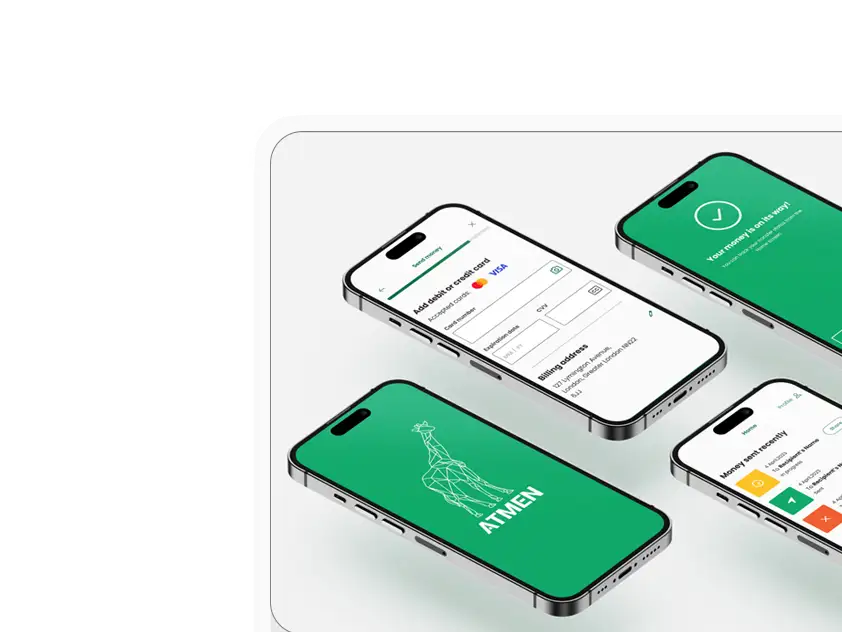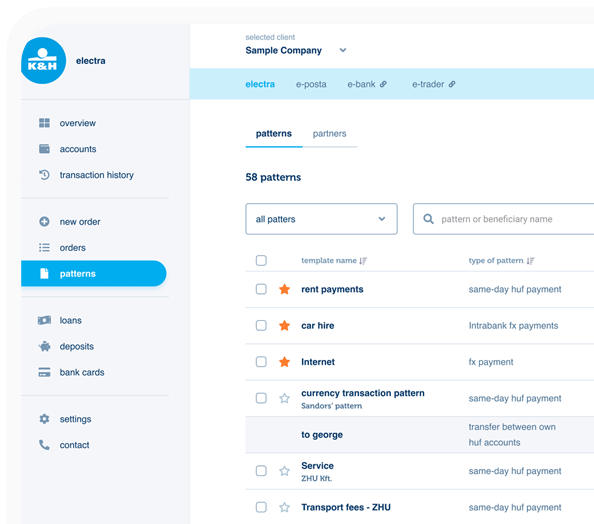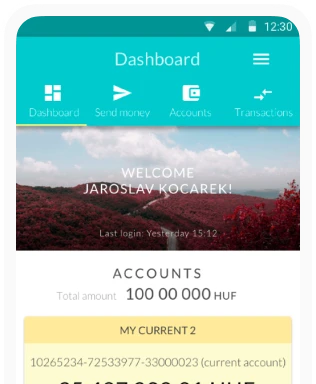The Great Digital Declutter: How AI Can Reshape Our App-Based World
Back in the day, the PC effectively tidied up our desks by integrating many different tools into one. Today, our digital devices are filled with applications that are rarely used or used for only a single function. However, artificial intelligence (AI), especially the emergence of advanced conversational interfaces and autonomous AI agents, could bring about a fundamental change: these technologies are capable of radically simplifying our digital interactions. This not only foresees a transformation of the current app ecosystem and even hardware, but could also significantly improve user experience (UX) and digital workflows.
When I took a photo of my desk for a LinkedIn post, I remembered what the average work desk looked like in, say, the eighties or nineties. It was usually cluttered with objects: notebooks, Post-it notes, pens, rulers, calendars, photographs, maybe even an ashtray or two. Each had its distinct function. Today, many desks are significantly tidier because these functions have been absorbed by the computer (except the ashtray).
 All these functions have been absorbed by the computer (generated by Gemini)
All these functions have been absorbed by the computer (generated by Gemini)Something similar is happening today. We accumulate numerous specific programs and applications, not on our physical desktop, but on our virtual one - our digital device. Until recently, every digital workflow had to be explicitly predefined – if we wanted to perform this or that task, we needed this or that application. There was no intelligent system or AI capable of dynamically understanding user intent and assembling the necessary steps or processes on the fly. This has led to the current situation: our phones are full of myriad applications, many of which we downloaded for a single purpose and rarely use again.
I propose that AI will trigger a similar transformation in our digital environment as the computer did with the physical desk. Instead of needing a separate application for every conceivable task (such as workout plans, recipes, and banking operations), we will increasingly interact with our devices through conversation. We will state our goal, and the AI will execute the task, coordinating the necessary actions without relying on a plethora of pre-installed, single-purpose applications with predefined processes. This could drastically reduce the need for the current application ecosystem.
The Roots of Digital Clutter
The spread of smartphones has undoubtedly changed our lives, but it has also created a new kind of digital clutter. Think about it. We install separate apps for banking, travel planning, social media, various online stores, news reading, and the list goes on. (Surveys show that an average device has around 80-100 applications.)
Each operates in its own little silo, with a fixed user interface and predefined processes. We also have to learn the unique logic of each application. (On a tangent here, but these predefined processes nowadays are super similar because we want the app to be intuitive for the user. So we rely heavily on already well-known best practices. This has its own benefits, obviously, but in return tends to kill creativity. But let this be my next article's topic.)
Drowning in Apps
This, of course, fundamentally shapes our user experience, and not in a positive direction. Research in this area typically lists the following common problems:
- App Fatigue: We are overwhelmed by the sheer volume of available applications. We are reluctant to download new applications – in 2024, the number of installations decreased by 2.3% globally. Although we may try 40-100 different applications per year, we typically only use 10-15 daily. Moreover, we spend the vast majority of our time (approximately 80%-85%) on our top 3-5 applications.
- Notification Overload: Signals and alerts from numerous applications contribute to digital fatigue and stress, fragmenting our attention.
- Digital Fatigue: Many of us feel overwhelmed by managing various devices and subscriptions. We struggle to limit screen time, which generally indicates technological fatigue. It seems we have reached the limit of how many devices we can comfortably manage.
- Poor User Experience: Bad UX, confusing interfaces, slow performance, numerous ads, and redundant functions between applications frustrate us. Of course, low tolerance for this also means that an app can be deleted after only a few minutes of use because we simply cannot find what we are looking for or cannot use it easily.
- Fragmentation: As users, we have to navigate different user interfaces and workflows. As developers, ensuring compatibility across different platforms and devices is a challenge.
 Digital fatigue (Photo by SEO Galaxy on Unsplash)
Digital fatigue (Photo by SEO Galaxy on Unsplash)AI as a Digital Declutterer: Key Technologies Behind the Change
However, just as the PC once consolidated the tools of the physical desk – the calendar, the business card holder, the calculator – into a single software environment, AI may also be able to clean up our digital environment in a similar way. The almost frighteningly rapid development of AI increasingly allows interaction with computers (including our mobile phones) to move toward simply stating what we want, instead of having to dig around in different apps. The most important technologies that make this possible, beyond large language models (LLMs), are natural language processing (NLP), AI agents, and generative UI.
- Natural Language Processing: We owe our ability to simply say what we want and have the AI understand our ask to NLP. Components of NLP include natural language understanding (NLU), intent recognition, entity extraction (finding important details like names, dates, locations in text), sentiment analysis, context understanding, and natural language generation (NLG) (creating natural-sounding responses). All of this allows us to interact naturally and express even complex needs without having to search through menus and buttons.
- Task Orchestration with AI Agents: These autonomous or semi-autonomous assistants are capable of breaking down tasks into steps, planning and reasoning, using tools (interacting with APIs, web browsers, other applications), and executing them independently, even across platforms. Agents can bridge the limitations of "plain" LLMs (such as access to real-time data) and coordinate digital services in a hyper-personalised manner, replacing human interaction with multiple applications. Here are a few examples:
- Travel Planning: Booking flights, hotels, car rentals, activities with a single request. "Organize a long weekend trip to Krakow for me, knowing my preferences already in terms of accommodation."
- Financial Management: Reviewing bills, transactions, providing advice. "What did I spend the most on this month? What kind of patterns are there in my spending habits?"
- Content Creation: Generating reports, emails, texts. "Write a summary of this meeting."
- Smart Home Control: Controlling multiple devices with a single command. "Dim the lights and turn on Netflix."
- E-commerce: Searching, comparing, ordering, tracking across multiple retailers. "Find the best-priced running shoes in size 42 with the best ankle support for my right leg with a stretched ligament in it."
- Customer Service: Understanding problems, accessing information, processing requests. "I received a damaged item, can you help me with a return or replacement?"
- Generative UI: This technology complements conversation-based interaction by dynamically creating visual interface elements within the conversation (e.g., tiles, maps, forms, diagrams). This allows the interface to flexibly adapt to the task and context. Instead of navigating a static interface, the interface itself adapts to our needs.
Consequences of the Transformation: New Opportunities and Radical Changes
All of this, of course, can bring about enormous changes, not only for users but for the entire technological and even business ecosystem. For users, this change is mostly positive:
- Ease of Use: Natural language interaction could be more intuitive than navigating graphical user interfaces (GUIs). It simplifies complex, multi-step tasks.
- Greater Efficiency: It automates workflows, reduces time and energy expenditure, and eliminates the so-called swivel chair problem (when we have to switch between multiple systems).
- Hyper-Personalization: Agents can use user history, context, and mood to customize interactions.
- Proactivity: Agents proactively uncover relevant information and services based on inferred needs.
- Accessibility: The spread or generalization of conversational interfaces and AI capabilities (voice control, text-to-speech) is naturally a huge step forward in this area as well. Maybe even making universal design possible for the first time in history.
 Disrupting the app store model (Photo by Brett Jordan on Pexels)
Disrupting the app store model (Photo by Brett Jordan on Pexels)Mobiles: from App Repository into the Interface for an AI Agent?
On the other hand, the impact on application developers, the app ecosystem, and even hardware manufacturing could be more disruptive:
- Disruption of the App Store Model: Direct connection with users and visibility may decrease if interaction occurs through agents. How developers make money, i.e., monetization, could completely change, shifting toward API (application programming interface) usage fees and revenue sharing.
- The Decline of Single-Function Applications: To survive, single-function apps they may need to become specialized tools accessible via APIs. Conflicts may also arise if businesses block agent access. (There’s another trend, primarily strong in Asia and Latin America, of super-apps, which in their own way also strive for some kind of service consolidation; we wrote more about this here.)
- The Rise of Integrated AI Platforms: Platform coordinating agents will come to the forefront, potentially becoming new operating systems or marketplaces. Businesses will need to make robust APIs and data available.
- The Evolution of Mobiles: The devices themselves may also change significantly; the phone could transform from an app repository into the primary interface for a universal AI agent, along with the operating system. Hardware design may prioritize components necessary for AI, such as NPUs (neural processing units, i.e., the "AI chip," which can process these calculations better than traditional processors). Could it be that new phones will no longer be advertised with the latest camera, but with the smartest AI chip? Attempts at this are already visible, such as Google's Gemini Nano or Apple Intelligence.
Outlook and Challenges in an AI-Driven World
Many experts believe that 2025 will be a big year for experimenting with AI agents: major technology companies and startups alike are actively developing such capabilities. Forecasts suggest that the AI agent market could reach $52.6 billion by 2030, and the broader "conversational" AI market is also expanding rapidly. The speed and extent of this transformation will, of course, also depend on how successfully complex technical, security, data privacy, and ethical challenges are addressed.
Of course, we shouldn't expect all of this to happen overnight; it is much more likely that applications will coexist with AI agents for a good while, and AI capabilities will increasingly be integrated into apps themselves. The complete merger is probably still some way off. Nevertheless, it is increasingly apparent that natural language could become the new primary user interface.









